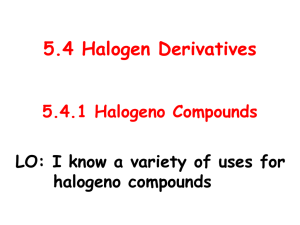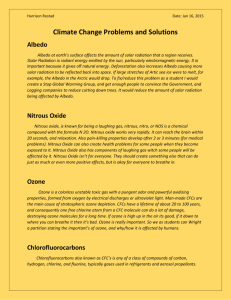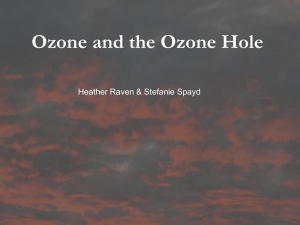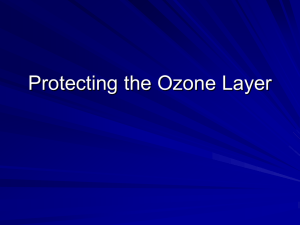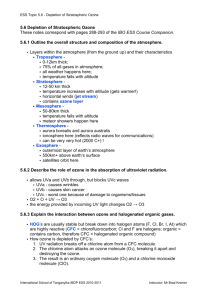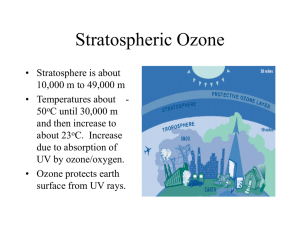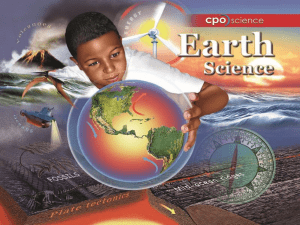Ozone layer
advertisement
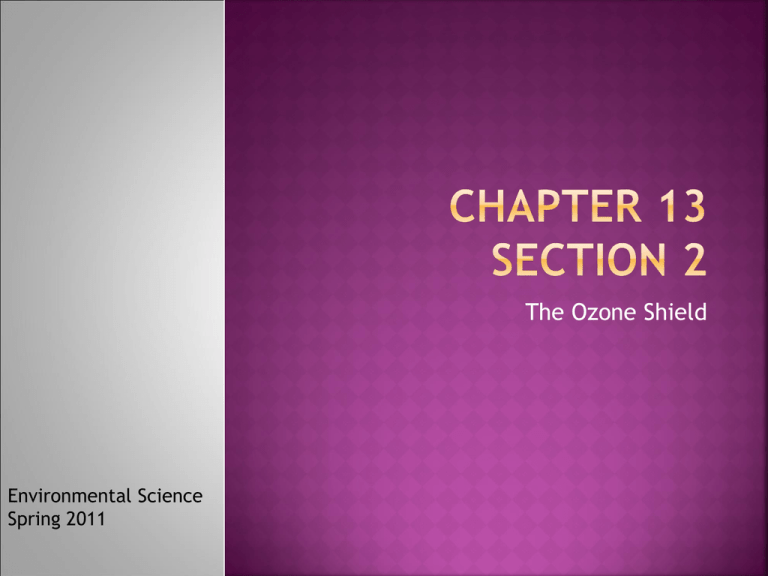
The Ozone Shield Environmental Science Spring 2011 Explain how the ozone layer shields the Earth from much of the sun’s harmful radiation Explain how chlorofluorocarbons damage the ozone layer Explain the process by which the ozone hole forms Describe the damaging effects of UV radiation Explain why the threat to the ozone layer is still continuing today Ozone layer: area in the stratosphere where ozone is highly concentrated Absorbs most of UV light from sun UV light is harmful to organisms, it can damage genetic material in living cells Ozone: atoms molecule made of three oxygen Chlorofluorocarbons (CFCs): human made chemicals, damaging to ozone layer Nonpoisonous, nonflamable, do not corrode metals, used as coolants in refrigerators and air conditioners 1970’s Stable on Earth’s surface Break apart high in stratosphere, where UV radiation is absorbed Once CFCs break apart, parts of CFC molecules destroy protective ozone CFC breaking down Ozone: In 1985 the ozone layer above the South pole had thinned by 50 to 98 percent Ozone hole: thinning of stratospheric ozone that occurs over the poles during spring Polar stratospheric clouds: when temperatures fall below -80 degrees C, high altitude clouds made of water and nitric acid form On surfaces of polar stratospheric clouds, products of CFCs are converted to molecular chlorine When sunlight returns to South Pole in spring, molecular chlorine is split into chlorine atoms by UV radiation Chlorine atoms destroy ozone This causes thin spot (ozone hole) ~70% of ozone layer can be destroyed in spring As amount of ozone in stratosphere decreases, more UV light is able to pass through the atmosphere and reach Earth’s surface UV light damages DNA Exposure to UV light makes the body more susceptible to skin cancer, and may cause certain other damaging effects to the human body High levels of UV light can kill single celled organisms (phytoplankton) Loss of phytoplankton disrupts ocean food chains and causes increase of carbon dioxide in atmosphere Damaging to amphibians, because they have eggs lacking shells that they lay in shallow waters UV light can damage unprotected DNA Amphibians often used as indicator species Can damage plants by interfering with photosynthesis Montreal Protocol: 1987, nations agreed to sharply limit their production of CFCs In 1992, developed countries agreed to eliminate most CFCs by 1995 US pledged to ban all substances that pose a significant danger to the ozone layer by 2000 CFC companies developed CFC replacements Considered a success story


